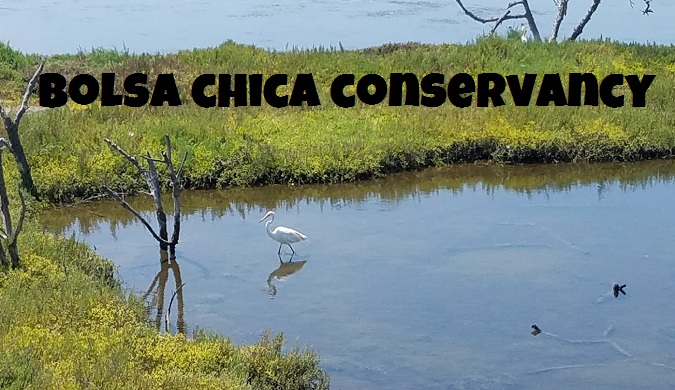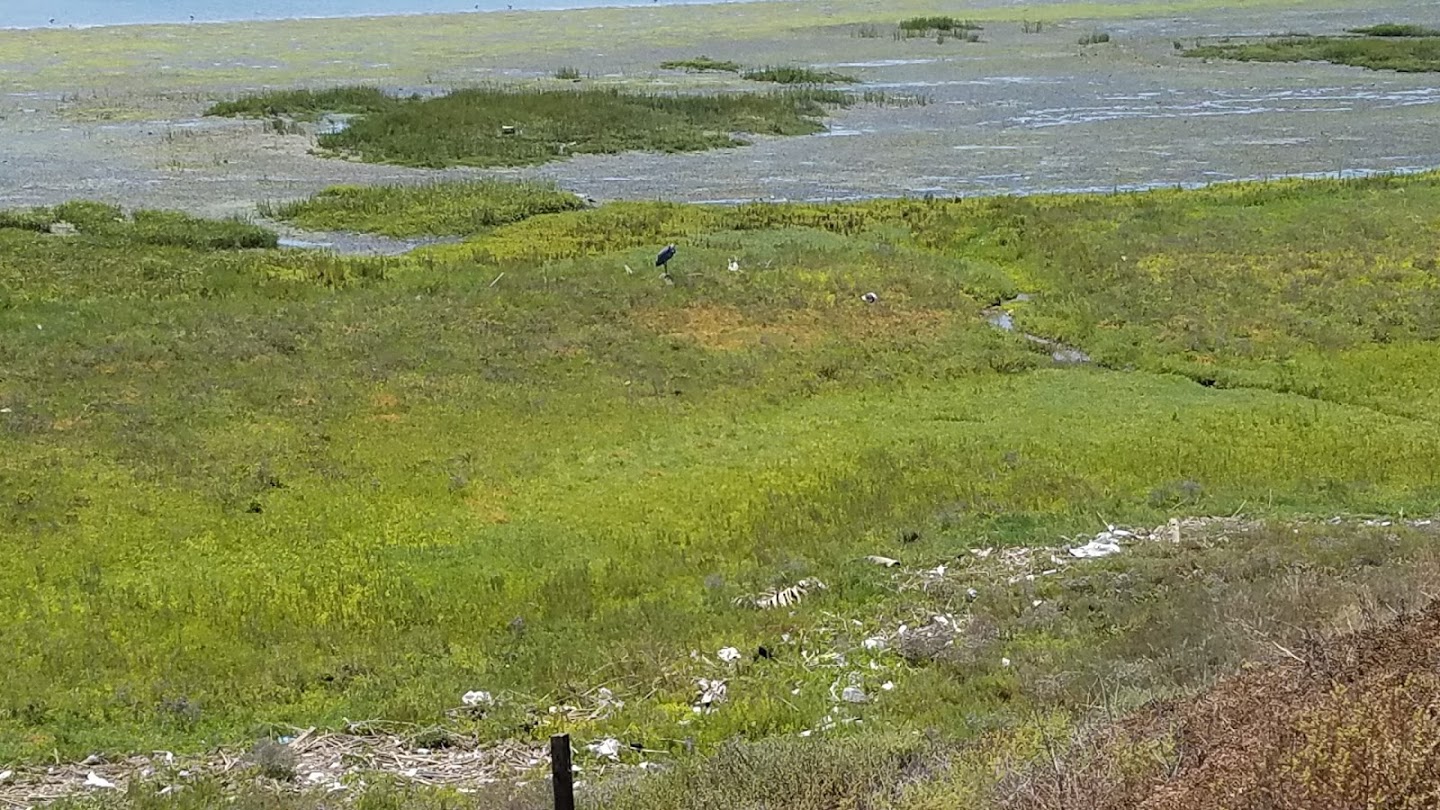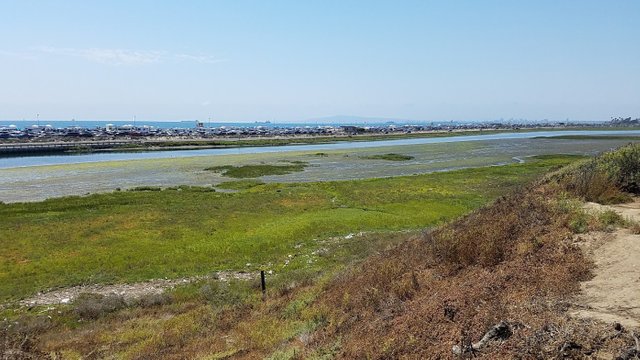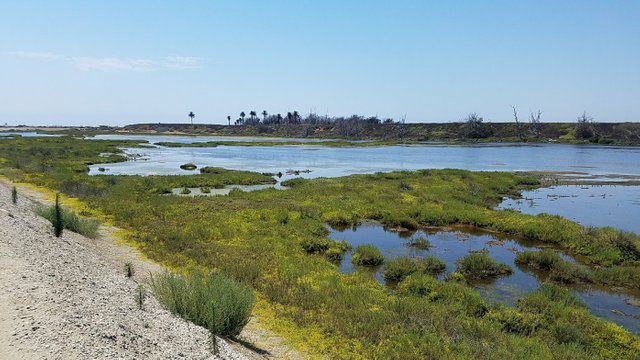Foul smelling fowl sanctuary, a thing of beauty: The Bolsa Chica Ecological Reserve


Aside from the occasional wafting of a particularly putrid stench, a stroll through the wetlands provides a relaxing opportunity to snap some beautiful photos. I am not a photographer and was only using my Samsung Galaxy S7 to snap these photos, but this local ecological reserve is frequented by professional photographers from around the world.
Nestled between the urban skyline of Long Beach, and the posh Newport Beach, right along California's Pacific Coast Highway, this is one of the more popular bird watching spots in Southern California. The area is called The Bolsa Chica ecological reserve, and at 1.4 acres of protected wetlands, is the largest saltwater marsh between Monterey Bay and the Tijuana River Estuary. Bolsa Chica is home to over 300 species of birds, various marine life, reptiles, and mammals. Hikers beware, there are rattlesnakes, coyotes, poison oak, and black widows that can get ya.

At one time in 2013, the rare Galapagos Blue Footed Booby (Sula nebouxii) was spotted in various Southern California locations, and Bird Watchers flocked to Bolsa Chica to snap some rare photos. Some of the other rare species frequenting the reserve are Beldings Savannah Sparrow (Passerculus sandwichensis beldingi), California Brown Pelican (Pelicanus occidentalis californicus), Burrowing Owl (Athene cunicularia), Light-footed Clapper rail (Rallus longirostris levipes), The Bald Eagle (Haliaeetus leucocephalus), and many more!


Retrieved from the http://bolsachica.org/the-wetlands/ecology/
What is a wetland?
A wetland is an area where water persists for the majority of the year, or in other words, really wet land! Wetlands are found all over the world! They may be composed of fresh water and be found where there are glaciers, rivers, or lakes. They may be composed mainly of salt water where water enters through a bay or underwater infusion. Or they may have a combination of salt water and fresh water (we call this brackish water) where a river and an ocean meet. This is called an estuary Wetlands have many names that have resulted both from the regions that they are found in, as well as the type of vegetation found in them: slough, bayou, swamp, bog, mire, quagmire, muskeg, fin, moor, oasis, wet meadow or marsh. A swamp is a wetland with lots of trees, a bog is a wetland that is very acidic with sphagnum moss that decays very slowly, and a marsh is a wetland with many tall grasses.

Bolsa Chica is considered a salt marsh with estuarine conditions that occur seasonally. Year round, salt water enters the wetlands through Anaheim Bay in Seal Beach as well as a tidal inlet near the south end of the reserve (just north of Seapoint Avenue along PCH). During the rainy season, however, fresh water flows into the wetlands from the Wintersburg Flood Control Channel which creates brackish conditions typical of an estuary. There are four places that have freshwater conditions at the reserve:
- A brackish runoff pond at the end of Springdale Road
- A swale and cattail marsh fed by runoff from the Seacliff Golf Course
- A very small marsh about 5ft by 15ft at the south end of Bolsa Chica by PCH that is fed by runoff from PCH
- Brackish water upstream in Wintersburg Flood Control Channel

What can Wetlands do for you?
Besides providing nesting and breeding grounds for birds, breeding and spawning habitat for fish, and a safe haven for many endangered and rare species, wetlands play an important ecological role by protecting inland areas from flooding and helping to clean and filter the water!
Nature’s Giant Sponge
Wetlands act like a giant tub or sponge for water. Water that enters from streams, rivers, or flood control channels is slowed down and absorbed by the wetland, which reduces erosion potential, decreases the risk of flooding, and allows for groundwater recharge.
While water sits in the wetland, sediment particles sink to the bottom. These sediments help create a thick mud that is completely saturated with water (we call this muck), which serves as the basis of the wetland food web. The muck supports important bacteria that help convert harmful pollutants such as fertilizers, manure, leaking septic tanks, and municipal sewage into important nutrients that enter the food web and give life to the diverse array of wildlife that thrive in the wetlands.

Loss of Wetlands and Resulting Impacts
When a wetland is filled in and built upon, the resulting impacts can be devastating. As Southern California’s coastal wetlands were filled in and developed, one resulting impact was flooding in many areas. A solution for this problem was to channelize many of the rivers and streams. These channels are successful for preventing floods, however much of the water that flows into them and out to the ocean is not treated. Alarming amounts of trash and toxins flow from these flood control systems out to our oceans harming and potentially killing marine life.
At Bolsa Chica, storm water and urban runoff enter the wetlands through the Wintersburg Channel. The Channel begins in Anaheim and flows through parts of Garden Grove, Orange, Santa Ana, Fountain Valley, and Huntington Beach. This means that anything that enters a storm drain connected to this channel winds up at Bolsa Chica. During winter storms, a rush of water enters the wetlands bringing with it trash and pollutants. Some of the trash that enters the wetlands includes sofas, mattresses, shopping carts, balls, spray paint cans, styrofoam, plastics and cigarette butts. The Bolsa Chica Conservancy holds cleanup events to remove man-made trash from the wetlands. Click here to find out ways you can get involved!
Changing Tides
Bolsa Chica is largely influenced by changing tides. Incoming and outgoing tides create unique zones in the wetland where different wildlife can be found. Explore the different zones below!


thanks to @kristyglas for the line breaks, find more here
If you are a witness and would like to be interviewed, you can find me in the PALnet discord chat or steemit.chat

Check out some of my previous posts if you like what you've read
Witness Awareness Series: Interviews with various witnesses
Interview with @followbtcnews
Interview with @dragorsoua
Interview with @timcliff
Interview with @someguy123
Interview with @neoxian
Interviews with @aggroed, @theprophet0, and @ausbitbank
Most Recent Posts
Interview with @reggaemuffin, minnowbooster extraordinaire: Witness awareness series
The Problem with Bitcoin Cash (BCC/BCH) hint:NO SUPPORT!
John McAfee will eat his own D*** (phallus) on national TV if Bitcoin isn't $500k in 3 years
Congratulations! This post has been upvoted from the communal account, @minnowsupport, by necrophagist from the Minnow Support Project. It's a witness project run by aggroed, ausbitbank, teamsteem, theprophet0, and someguy123. The goal is to help Steemit grow by supporting Minnows and creating a social network. Please find us in the Peace, Abundance, and Liberty Network (PALnet) Discord Channel. It's a completely public and open space to all members of the Steemit community who voluntarily choose to be there.
If you like what we're doing please upvote this comment so we can continue to build the community account that's supporting all members.